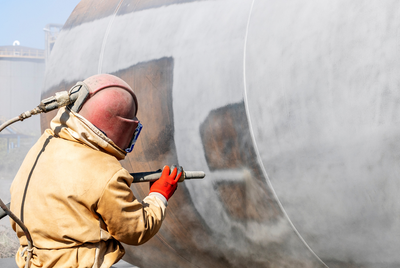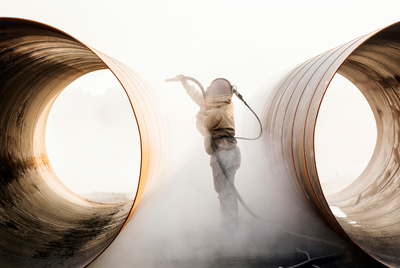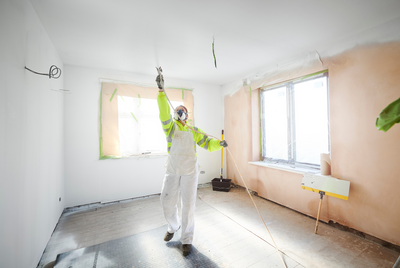20th Mar 2024
When identifying the positives and negatives of using a paint sprayer, we must consider what applications we use them for. For instance, a DIYer/contract painter and decorator's needs differ vastly from an industrial sprayer inside a painting hall. To get to the root of the question, we must recognise the needs of our own projects.
Considering the average DIYer or even contract painter and decorator, using a paint sprayer comes with these pros and cons.
Pros
- Speed: paint sprayers are generally faster than traditional brush and roller methods, allowing you to cover large areas quickly and efficiently and save time. This makes them ideal for large projects like walls, fences, or exterior surfaces.
- Uniform Coverage: Sprayers provide a smooth, even coat of paint without brush marks or roller stipples. This results in a professional-looking finish, especially on surfaces with intricate details or textures.
- Versatility: Paint sprayers can handle a variety of coatings, including latex, oil-based paints, stains, varnishes, and lacquers. They can be used on walls, ceilings, furniture, and cabinets.
- Accessibility: Sprayers can reach tight or difficult-to-access areas like corners, crevices, and irregular surfaces more easily than brushes or rollers, resulting in better coverage overall. This also speeds up the coating and saves time.
- Efficiency: With proper setup and technique, paint sprayers can minimise waste by delivering the paint precisely where needed, reducing paint consumption and saving time.
- Savings: While paint sprayers require a higher initial investment than standard painting tools like brushes and rollers, they are more cost-effective in the long term for medium and large projects due to reduced labour time and better paint consumption.
Cons
- Preparation: Using a paint sprayer requires thorough preparation, including masking off areas you don't want to paint, covering nearby objects to protect them from overspray, and ensuring proper ventilation to minimise inhalation risks.
- Overspray: Sprayers can produce overspray, resulting in wasted paint and potentially causing a mess if not properly contained. This makes them less suitable for small or confined spaces without proper precautions.
- Learning Curve: Achieving optimal results with a paint sprayer often requires practice and familiarity with the equipment. Proper technique is essential to avoid uneven coverage, drips, or runs.
- Cleanup: Paint sprayers require thorough cleaning after each use to prevent clogs and ensure proper functioning. This can be time-consuming, involving disassembling and cleaning multiple components, such as the nozzle, hose, and paint reservoir.
Overall, paint sprayers offer significant speed, coverage, and versatility advantages, but they require proper preparation, technique, and maintenance to achieve optimal results. For medium to large residential, commercial, and industrial projects, we recommend the Airlessco brand of electric airless sprayers.
For the typical contractor paint and decorator, the Airlessco electric airless sprayer, “the LP series”, especially the LP555 model, stands out as a robust unit housed in a compact frame, facilitating easy handling and transport. Demonstrating its reliability over years of service, maintenance for the LP555 is straightforward. Its quick disassembly, externally adjustable packings, and DC-cooled motor contribute to its efficiency. The LP555, as proven by industry professionals, excels in easily handling medium to large residential and commercial projects. Moreover, it is effective in automotive refinishing, wood finishing, and decorative and speciality finishes.
In large-scale industrial, commercial, and residential applications, the TS1750 emerges as a top-tier electric airless sprayer. Made for high-volume contract work, this pump efficiently sprays heavy and highly viscous water and solvent-based coatings, including 100% acrylics, interior and exterior wall paints, dry fall, mastics, epoxy, and intumescent coatings. It also features a heavy-duty gearbox with hardened gears and a chrome-plated steel tube cart equipped with pneumatic wheels; the TS1750 ensures uncompromising reliability, saving time and effort on demanding projects.




